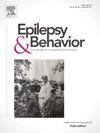Development and feasibility testing of an implementation evaluation tool: Recommendations from the managing epilepsy well (MEW) network research collaborative
IF 2.3
3区 医学
Q2 BEHAVIORAL SCIENCES
引用次数: 0
Abstract
Aims
The Managing Epilepsy Well (MEW) Network has led the development, testing and scale-up of epilepsy self-management (ESM). The MEW Integrated Database (MEW DB) is a pooled repository of archival studies that facilitates aggregate analysis. This report describes an implementation evaluation tool for ESM adopters.
Methods
Publicly available materials on program implementation, adoption and sustainability as well as readiness surveys used by the MEW Network were reviewed, as were content domains and format styles relevant to ESM implementation. Requirements for data Tiers included: 1) survey Tier should be short (≤6 items) and completed quickly (< 3 min), 2) question and response format should be consistent, 3) data elements are relevant to ESM adopters and 4) the tool should be applicable across ESM programs. Iterative review, discussion and item-ranking yielded a final set of 3 distinct data element Tiers.
Results
Implementation data elements assess the characteristics of organization that may be a potential ESM adopter (Tier 1), organizational readiness to ESM implementation (Tier 2) and perceptions of ESM program effects or impact by adopters at the individual and program levels (Tier 3). There are 18 data elements, 6 elements in each Tier. Organizational characteristics reflect health disparities among people with epilepsy and common comorbidities. Implementation readiness barriers include motivational factors, training and resources. Implementation experience/outcomes include perceived ESM duration, credibility, impact, likability and effectiveness.
Conclusions
A brief and practical implementation evaluation tool for ESM has potential value and important clinical and policy implications in advancing care for people with epilepsy.
实施评估工具的开发和可行性测试:来自癫痫管理良好网络研究协作的建议
癫痫良好管理网络领导了癫痫自我管理(ESM)的开发、测试和推广。MEW集成数据库(MEW DB)是一个汇集了档案研究的存储库,便于汇总分析。本报告描述了ESM采用者的实现评估工具。方法回顾了关于项目实施、采用和可持续性的公开材料,以及新环境管理网络使用的准备情况调查,以及与ESM实施相关的内容领域和格式风格。对数据层的要求包括:1)调查层应短(≤6项)且快速完成(<;3分钟),2)问题和回答格式应一致,3)数据元素与ESM采用者相关,4)该工具应适用于所有ESM项目。反复的审查、讨论和项目排序最终产生了3个不同的数据元素层。结果实施数据元素评估可能成为ESM潜在采用者的组织特征(第1层),组织对ESM实施的准备程度(第2层)以及采用者在个人和项目层面对ESM项目效果或影响的感知(第3层)。有18个数据元素,每个Tier中有6个元素。组织特征反映了癫痫患者和常见合并症患者之间的健康差异。实施准备障碍包括动机因素、培训和资源。实施经验/结果包括感知ESM持续时间、可信度、影响、亲和力和有效性。结论简易实用的ESM实施评估工具在促进癫痫患者护理方面具有潜在价值和重要的临床和政策意义。
本文章由计算机程序翻译,如有差异,请以英文原文为准。
求助全文
约1分钟内获得全文
求助全文
来源期刊

Epilepsy & Behavior
医学-行为科学
CiteScore
5.40
自引率
15.40%
发文量
385
审稿时长
43 days
期刊介绍:
Epilepsy & Behavior is the fastest-growing international journal uniquely devoted to the rapid dissemination of the most current information available on the behavioral aspects of seizures and epilepsy.
Epilepsy & Behavior presents original peer-reviewed articles based on laboratory and clinical research. Topics are drawn from a variety of fields, including clinical neurology, neurosurgery, neuropsychiatry, neuropsychology, neurophysiology, neuropharmacology, and neuroimaging.
From September 2012 Epilepsy & Behavior stopped accepting Case Reports for publication in the journal. From this date authors who submit to Epilepsy & Behavior will be offered a transfer or asked to resubmit their Case Reports to its new sister journal, Epilepsy & Behavior Case Reports.
 求助内容:
求助内容: 应助结果提醒方式:
应助结果提醒方式:


